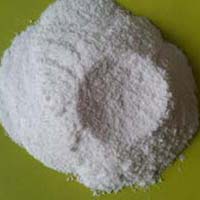

Workers must know about SDSs and how to locate information quickly in case of an adverse event. This includes chemical identification, composition, hazards, safe handling practices, and emergency response. The first through eighth sections contain general chemical information. The author of the SDS may also include additional information as necessary. The Globally Harmonized System of Classification and Labelling of Chemicals (GHS) dictates the minimum amount of information to include on safety data sheets. This applies to all chemicals deemed as hazardous to users. The Hazard Communication Standard (HCS) mandates that all manufacturers, distributors, and importers provide SDSs. There are also reports of people having seizures due to calcium chloride exposure. In extreme cases of exposure, individuals have experienced heart and breathing problems. A more serious consequence is a transient corneal injury. If this material comes in contact with the eyes it can cause irritation.

Sometimes, manipulation of this salt can create dust particles. This can lead to vomiting, extreme thirst, stomach pain, and low blood pressure. It can cause burns to the mouth, throat, and stomach. Ingesting calcium chloride is a serious safety and health risk. This presents another risk of burn injuries. When calcium chloride is added to hot water it causes violent boiling.
CALCIUM CHLORIDE MOLAR MASS SKIN
If inhaled, it can cause irritation or damage to the nose and throat.ĭirect contact of the salt on the skin can result in irritation or even superficial burns. This process causes the emission of hydrogen chloride fumes which are toxic. When you heat calcium chloride, it decomposes. This means that is causes symptoms ranging from swelling and pain to burns. Calcium Chloride HazardsĬalcium chloride is classified as an “irritant”. It’s also used as an anti-moisture agent in the manufacture and storage of medications. This may cause tetany which is a severe and sustained contraction of muscles. In medicine, calcium chloride provides treatment for low calcium levels. It also improves processes at wastewater treatment plants.

The calcium absorbs into the concrete which slows erosion. This is a common practice in swimming pools or anywhere that concrete holds water. Water TreatmentĪdding calcium chloride to “soft water” makes it “harder”. It accomplishes this by increasing the density of solids-free brines. This is important during the water phase of invert emulsion drilling of fluids. The Oil and Gas IndustryĬalcium chloride stops the swelling of clay.

This helps to delay the spoiling of food. Many pre-packaged foods use this salt to maintain dryness. Sports drinks add calcium chloride to help replace electrolytes lost during vigorous exercise. The body naturally produces calcium and chloride as part of its normal electrolytes. This makes it a good replacement for standard salt in “low sodium” foods. This helps to preserve canned vegetables and is key to changing soy curds into solid tofu.Ĭalcium chloride tastes very salty. It acts as a firming agent by absorbing water. This salt has many applications in food preparation and enhancement. This is often the kind of salt that’s scattered on roads by salt trucks. By dissolving water and making it harder to freeze, it decreases ice buildup and serves as a deicer. This benefits road construction by decreasing the setting time for concrete. Road ConstructionĬalcium chloride has desiccant properties which means it dissolves water. The following provides examples of the role this element plays in our everyday lives. These range from construction to food preparation. You will find calcium chloride in a wide variety of industries. Calcium carbonate will stay in a dissolved state indefinitely. It’s also soluble in methyl carbonate, acetic acid, and ethanol. This element dissolves in water when heated creating a clear, colorless liquid. It’s white to off-white, odorless, and sinks when placed in a solution. This means that it’s a combination of calcium and chlorine.Ĭalcium chloride can take the form of pellets, flakes, or granules. The molecular calcium chloride formula is CaCl2. What Is Calcium Chloride?Ĭalcium chloride is an element in the salt family. For example, construction, food processing, and medical treatment use calcium chloride.ĭo you work with any type of chemical? Do you know what a Safety Data Sheet is and how to use it? Keep reading to learn more about calcium chloride and the importance of Safety Data Sheets. Most workplaces use some type of chemical, even if it’s only for cleaning purposes. Did you know that 18 out of every 100 full-time employees in chemical manufacturing died in 2018? These deaths resulted from a work-related event or exposure.


 0 kommentar(er)
0 kommentar(er)
